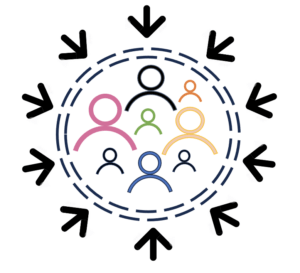The culture of any product team is rooted in the spoken and unspoken tenets with which they operate. As a product leader for over 25 years, I have learned that teams that understand and accept the following principles are much more likely to work harmoniously in service of both their customers and their business goals.

1. Customers don’t know what is possible, so customer requirements are not product requirements.
One of the most common pitfalls in product development is assuming that customer requests equate to product requirements. While customer feedback is invaluable, customers may not know the full spectrum of possibilities and constraints within your product's domain. Remember the famous quote attributed to Henry Ford? “If I had asked people what they wanted, they would have said faster horses.” Instead, use customer input as inspiration and insight, but don't mindlessly translate it into product features. Your role is to bridge the gap between what customers ask for and what they truly need.
2. You are not the persona for your customer; you are the voice of many customers.
A common mistake product teams make is they assume that their personal preferences are universal and short-cut the discovery process. It's essential to remember that you are not your product's target user. You represent a diverse customer base with varying demographics, needs, preferences, and pain points. Your job is to channel the collective voice of your customers, ensuring their needs are heard and met in the product's development, which leads to better products. While you may share traits with your customers, your personal perspective or experiences should not be assumed to be typical or representative of the larger customer base.
3. Features aren’t benefits. Benefits are where the value lives. More features don’t necessarily create more value.
In the pursuit of innovation, it's easy to fall into the trap of adding more features to your product. However, the true value lies in the benefits these features provide to your customers. A feature-rich product doesn't guarantee success if those features don't address real customer pain points or enhance their experience. Focus on delivering meaningful benefits, not just a laundry list of features.
4. Product over process. Rigorous processes may support quality code but do not always result in a valuable product.
Processes are essential for ensuring efficiency, consistency, and quality in product development. However, it's crucial to avoid becoming so enamored with nailing all your processes that you lose sight of the product's purpose. That isn’t to say the teams should avoid processes altogether. Agile processes, by design, prioritize product over process. They accelerate innovation by encouraging iterative development and learning, prioritizing getting customer feedback over delivering a “one and done” perfect solution. Speed and experimentation are hallmarks of Agile teams because the goal is to provide valuable increments of a product in short time frames.
5. A great product must support customer goals and be aligned with the company’s business model and competencies.
Striking the right balance between customer-centricity and aligning with the company's business model is a challenging but necessary task. Your product should align with your customers' goals and provide value while fitting within your organization's capabilities and revenue model. Successful products find harmony between these two forces.
6. Solve a real customer problem or solve the problem better than other solutions.
At the heart of every successful product is the ability to solve a real customer problem. Your product should address an unmet need, or offer a superior solution to existing alternatives. Sometimes, the problem is related to challenges customers may have in accessing the benefits or achieving their desired outcomes, although there are existing options. The key to innovation is identifying these opportunities and delivering a compelling solution. You don’t need a first-mover advantage to innovate on behalf of customers. The iPod entered the market three years after Sony launched the first MP3 player and disrupted the digital music experience with its marriage of elegant device design and intelligent software.
7. Find “product/market fit,” where the first variable is the customer, not the product.
Achieving product/market fit is a crucial milestone in a product's journey. Building a product without a clear understanding of the customer's needs is a risky endeavor. You might end up with a product that nobody wants or doesn't effectively address real-world problems. By prioritizing the customer as the first variable, you increase the likelihood of creating a product that not only resonates with the market but also has the potential to achieve success and widespread adoption. Your product will most likely serve that market by deeply understanding your target market, their needs, and their preferences.
8. How a customer accesses, uses, and gains value from the product or service is part of the product. It’s called “Customer Experience” for a reason.
Customer Experience (CX) is an integral part of your product. Understanding your labor issues or poor partner choices is not the customer's job. When you charge the customer’s credit card, you take responsibility for their entire experience through all the stages of their engagement with you.
The experience extends to how customers interact, perceive, and benefit from your offering. Great service design is the seamless combination of people, processes, products, and partners. Ineffective processes, unreliable partners, and rude employees can significantly diminish a product's quality, particularly when other options are available that meet the same quality bar. Simply having a well-designed product is not enough to attract and retain customers.
9. Fall in love with your customers and their problems, not the solution.
It’s human nature that when a person is presented with a problem or situation, like problems they have worked through in the past, they will gravitate to the previous solution without dwelling on the unique elements of the problem. However, prematurely becoming enamored with the solution can lead to confirmation bias, which over-emphasizes existing beliefs and hypotheses while ignoring contradictory evidence. Shift your focus from your solution to understanding and empathizing with your customers' needs. You're better equipped to find transformative solutions when you fall in love with their problems.
10. Products fail because of a lack of customers.
Product teams must understand customer acquisition and retention strategies as central pillars of any product development strategy. Where, how, and when will your customers learn about your product and its benefits? And, of course, there are pricing implications when designing features and determining the cost structure. Ultimately, the success or failure of a product is determined by its ability to attract and retain customers. It doesn't matter how well-designed or innovative your product is if it doesn't resonate with your target audience.
Product teams that internalize these ten truths as their core tenets inevitably drive positive customer outcomes and increased loyalty while fueling business growth. A product that consistently delivers value to customers by addressing their needs can establish a strong position in the market, making it more difficult for competitors to challenge its dominance. Teams that respect these tenets are also more likely to be inclusive of diverse perspectives, undermine biases that can limit innovation, and realize their creative potential.








